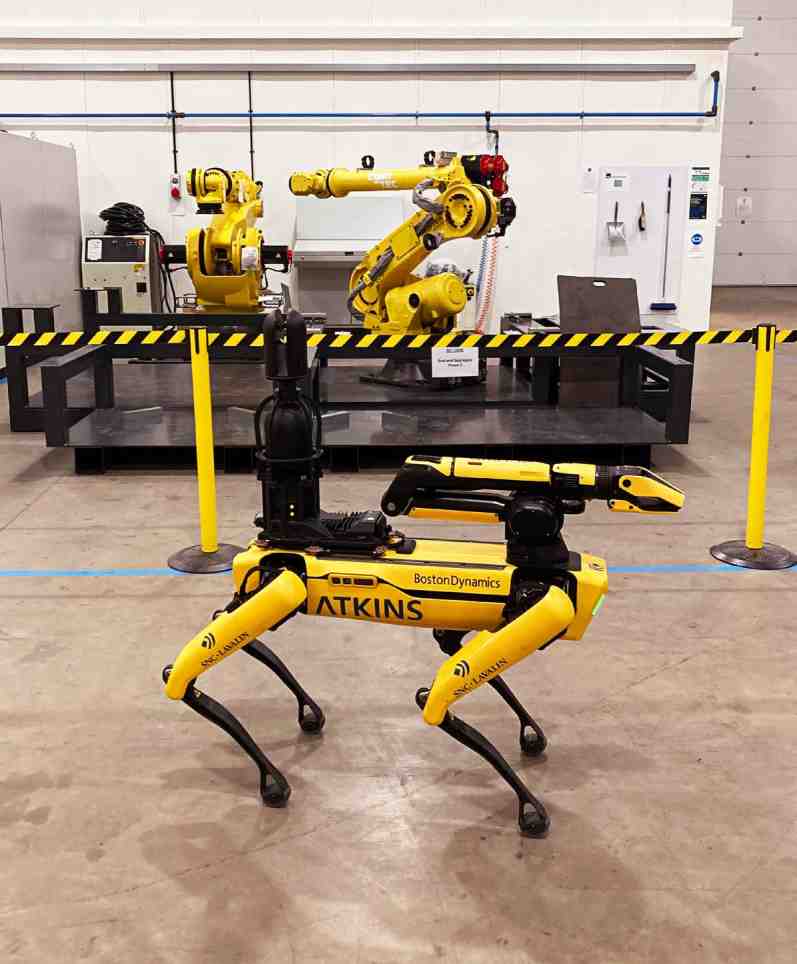Nuclear has a key role to play in the net zero energy system of the future, but if it’s to unlock its true potential then it must embrace digitalisation, writes Sam Stephens, director and head of Digital for SNC-Lavalin’s nuclear sector.

Nuclear will play a crucial role in the transition to net zero, not only because it’s the second lowest emitter of CO2, but also because its resilience and reliability ensures security of supply in a system using increasing amounts of intermittent renewables. We need a resilient energy supply to power the transition to net zero, one that can also tackle the increase in demand that electrification of transport and heat will create.
The UK’s target to fully decarbonise its energy generation by 2035 is no small task. Replacing ageing plants and ensuring sufficient energy capacity to meet demand is estimated to require around 159 to 203GW of new assets: that’s equivalent to building the UK’s entire energy system twice over in under 13 years.
By 2030, power generation is scheduled to have ended at seven UK advanced gas reactor nuclear power stations, yet many of the new generation assets won’t come online before 2036.
Time is not on our side
Time is not on our side: it can take over a decade to design, construct and commission new assets. The clock is ticking and we need to find ways to not only increase the pace of new build development but also extend the useful life of existing plants.
Extensive manpower is also required to achieve these goals and the sector has a skills gap that’s cause for concern. This reaches across all stages of the nuclear lifecycle, from design and development through to operations, maintenance to decommissioning. The reason? An ageing workforce – a third of which is expected to retire in the next 15 years.
Without digital, nuclear will fail to achieve its true potential
If we’re to overcome these challenges and ensure nuclear fulfils its potential in the future energy mix, the sector simply must embrace digital tools and the benefits they bring.
Every major engineering industry is embracing a digital future, and the supply chain is starting to demand it. If nuclear doesn’t adapt, then it risks being left behind, operating with the same on-site uncertainty, bottlenecks and lack of early warnings while others move forward and reap digital’s rewards.
The simple truth is this: digital can make a difference at every point of the nuclear lifecycle, and the sector needs to take advantage of the tools at its disposal.
Digital’s role in plant design and construction
The related cost savings will ensure the necessary funds are available to meet the UK’s required build rate of the next generation of nuclear plants, which can also be enhanced through the use of digital tools.
The design and construction of plants are incredibly complex and processes often could – and should – be optimised. Prioritisation of tasks may be inefficient or KPIs subjective, for example, but when a fully collaborative and consistent digital approach is adopted it’s not just a digital transformation that takes place.
By pulling all data into one single digital source, transparency and risk awareness is transformed, which in turn helps to optimise processes and decision-making.
Capturing, reusing, codifying and analysing data also has the ability to speed up the traditional design process by up to 80%. With time sorely of the essence, why wouldn’t you take advantage of such abilities?
Have you read?
Enel launches AI and robotics innovation lab in Israel
Can AI improve the profitability of nuclear energy?
Optimising asset performance with industrial analytics and AI
A process digital twin, for example, transforms the design process by integrating a simulation model into the early stages. This way the design is completed in a digitally-integrated way to ensure everything remains up-to-date. This improves workflows between disciplines, significantly reducing the chance of repetition to improve efficiencies.
As well as cutting start-up time and overall risk, costs can also be saved. 3D modelling can lower costs by up to 30%, for example, while 15% can be saved on the overall installed cost through design optimisation.
Data captured during design and construction can also add value throughout the nuclear lifecycle.
One of the main challenges the sector faces is scattered, unstructured data from legacy plants. By recording and storing data from the start, we can also help to optimise processes in the operations and decommissioning stages.
Digital’s role in asset management and plant life extension
Digital twins can simulate and evaluate alternative maintenance and operational strategies, enabling you to identify the most cost-effective options for your plant.
Then there’s AI-powered predictive maintenance, which can lower unplanned downtime by 35%, saving tens of millions in asset failure prevention and providing a secure energy supply. Its use has also been proven to extend a site’s useful life by 10% – critical given the plant life extensions currently being implemented across the UK.
Digital’s role in decommissioning and waste management
As an operational plant comes to the end of its life, digital plays a part. By capturing and making data available, those involved can have a 360° view of a plant and can determine efficiencies that will accelerate the dismantling and demolition of plants, freeing up valuable real estate for new nuclear facilities to be built.
Webcast recording: The Decommissioning & Re-purposing eco-system – vital to the energy transition
Plugging the skills gap
We also need digital to overcome the challenge of a shrinking skilled workforce. The knowledge of industry stalwarts should be gathered and stored before it becomes lost, plus automation can provide efficiencies and help tackle workforce attrition by augmenting human personnel.
Furthermore, robotics can ensure the continued safety of staff. By replacing people with remotely operated robots in hazardous situations, workers’ exposure to radiation is lowered if not entirely removed.

Robots also aren’t restricted to how long they can work in a hazardous environment. Using such tools means time working on site can be increased and tasks completed faster. Consider this – a 20% schedule saving over a 120-year decommissioning programme could reduce overall timescales by a generation.
Barriers to break
Looking forward, nuclear simply cannot afford not to embrace technology. If it’s to meet its potential, we need the benefits of digital – efficiency, reduced costs, increased safety and sustainability – but there are several barriers standing in the way of the sector’s digital transformation.
Firstly, we need to ensure people don’t feel threatened by technologies such as AI and robotics, which have been developed to augment rather than replace. Then we need to improve confidence in cybersecurity. Trust is low, yet it’s actually been proven that people are the weakest link, as 99% of cyberattacks use techniques such as phishing to trick users into installing malware.
The boardroom also has a role to play by embracing new business models that require investment up front to realise long term efficiencies. However, that shouldn’t be too tough, as the pandemic brought to the forefront how invaluable technology can be and has already accelerated investment.
We need to take learning from the rapid progress achieved during the last three years as well as the sense of urgency that powered it. If we don’t, nuclear simply won’t be able to achieve its full potential as a central part of the UK’s net zero energy system.
Read more about the nuclear sector’s digitalisation journey in SNC-Lavalin’s report, Digital in nuclear: our vision for 2035.










